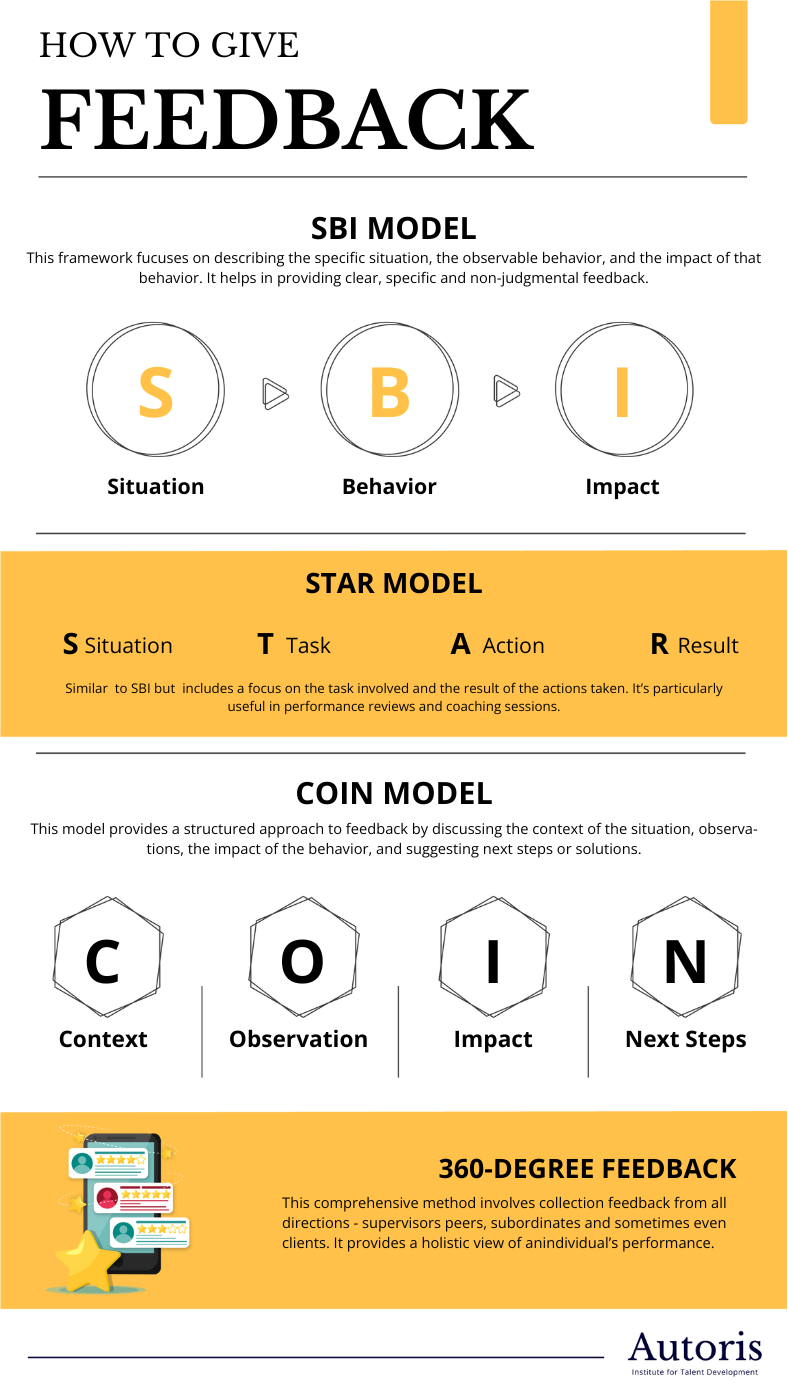Feedback is a vital tool for personal and professional growth. It’s like a mirror that shows us our strengths and what we need to improve. This helps guide us to do better and understand more.
Whether at work, school, or in our relationships, feedback lets us see ourselves from the outside looking in. This can help change how we act or behave for the best results possible.
Here are four of the most common feedback models out there:
1. The SBI Model
- Description: The Situation-Behavior-Impact (SBI) model focuses on specific instances. It starts by describing the situation where the observed behavior occurred, then details the behavior itself, and finally, discusses the impact of this behavior. This model is effective for providing clear, focused feedback without ambiguity.
2. The STAR Model
- Description: The STAR model stands for Situation, Task, Action, and Result. This approach outlines the context (Situation), the task that needed to be accomplished, the actions taken, and the results of these actions. It’s particularly useful for giving feedback in a structured manner that highlights the consequences of actions.
3. The COIN Model
- Description: COIN stands for Context, Observation, Impact, and Next steps. This model starts with the context of the behavior, follows with objective observations, explains the impact of the behavior, and concludes with suggestions for future actions. It’s a comprehensive approach that not only addresses past actions but also guides future behavior.
4. 360-Degree Feedback
- Description: The 360-degree feedback model involves gathering feedback from a variety of sources, including peers, subordinates, supervisors, and sometimes, external sources like clients. This model offers a well-rounded perspective, highlighting how an individual’s behavior and performance are perceived by different people around them.
In conclusion, each of these feedback models serves a unique purpose and can be applied in various contexts to foster growth and improvement.

